India is a land of many identities, each exquisite in its own way. From Kashmir valleys to the ocean depths at Kanyakumari, the country diverges into an array of cultures and traditions. In spite of harnessing such diversity, we find unity in the art our land festers. Art has been a prevalent form of expression and communication right from prehistoric times. In fact, every community uses its own individual style of art to represent it’s cultural traditions. The tribal communities of India are known for their repository of creative arts. Indulging in these indigenous art forms is agreeably the best way for art enthusiasts to explore the heterogeneity of Indian culture. So here we bring to you a list of 10 tribal art forms from India, for beginners to scout.
Warli Folk Art
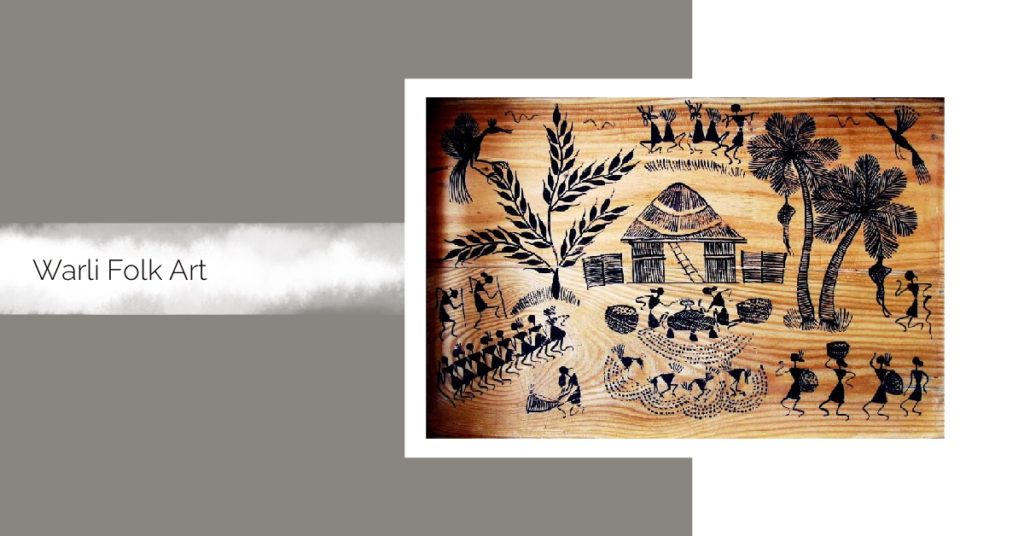
Warli art originates from the North Sahyadri range of Maharashtra, tracing back to the 10th century A.D. This classic tribal art form was born from the artistic pursuits and need for traditional preservation of the tribal community. The gifts of nature and wildlife have a strong influence on Warli art. Owing to this influence, simple geometric shapes are used to depict elements of nature and mankind. Additionally, the picturization of their tribal dance – ‘Tarpa’ is a prominent feature. Formerly, the Warli only used their ochre-red clay huts as a canvas for their paintings. The tint for painting is a liquid mixture of rice flour, water and gum. Warli paintings are a means of passing on the tribe’s traditions and folklore for generations to come.
Santhal Paintings
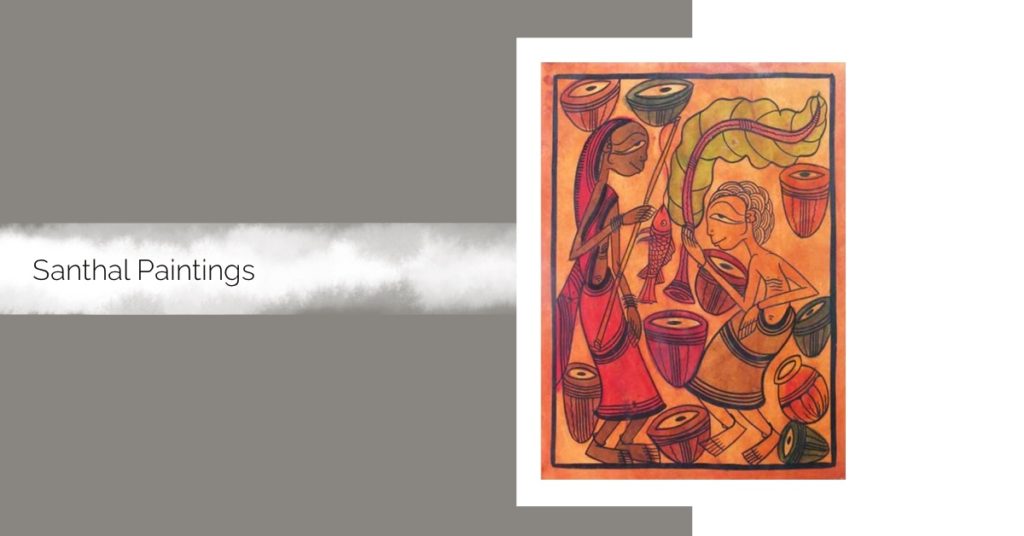
This style of art belongs to the Santhal tribe populated in the bordering states of East India. Santhal paintings are another effortless and alluring form of tribal art. They are a fine representation of the everyday life of the tribe. Made with tints derived from natural elements, Santhal paintings are vibrant, lively and conform to no particular colour palette. They bring out the integration of humans and nature with enchanting depictions of farming, fishing, hunting and merry making. Contemporary artists use synthetic colours to create the paintings on scrolls and cloth. In essence, Santhal art is minimalistic and enchanting to say the least.
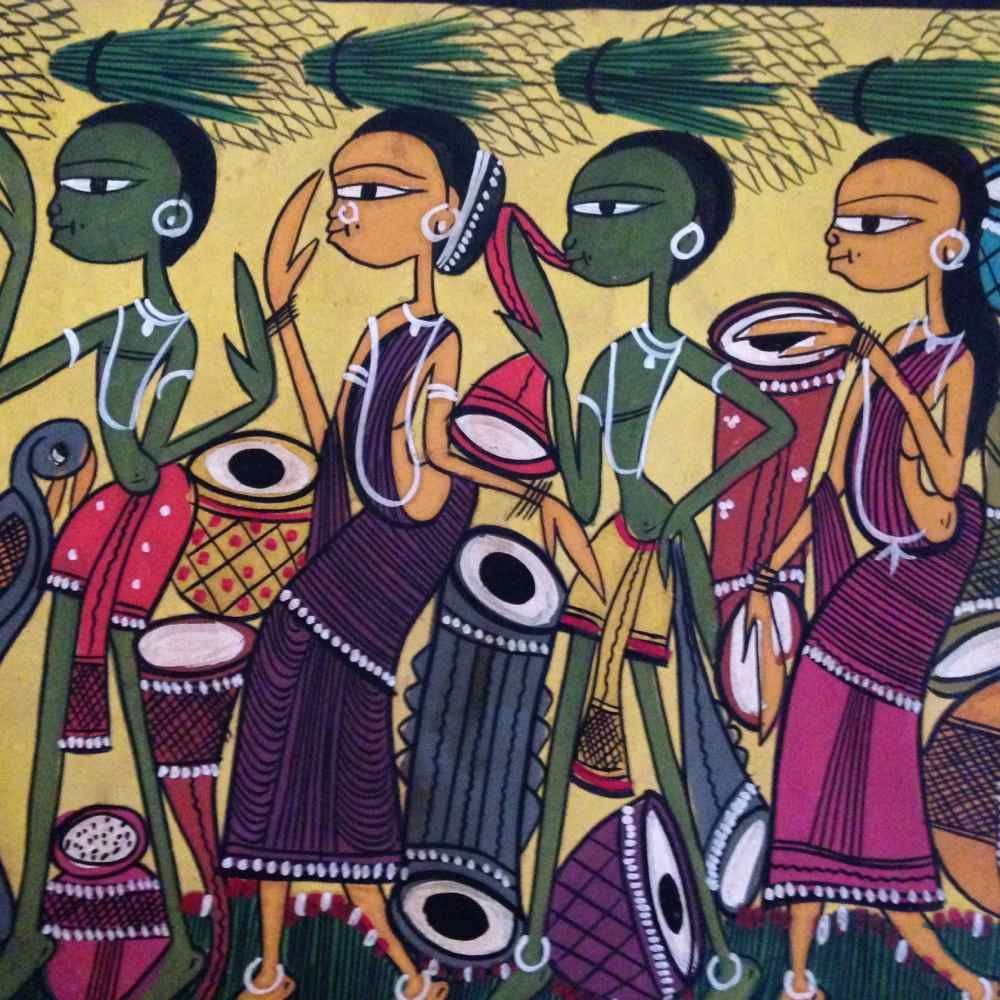
https://in.pinterest.com 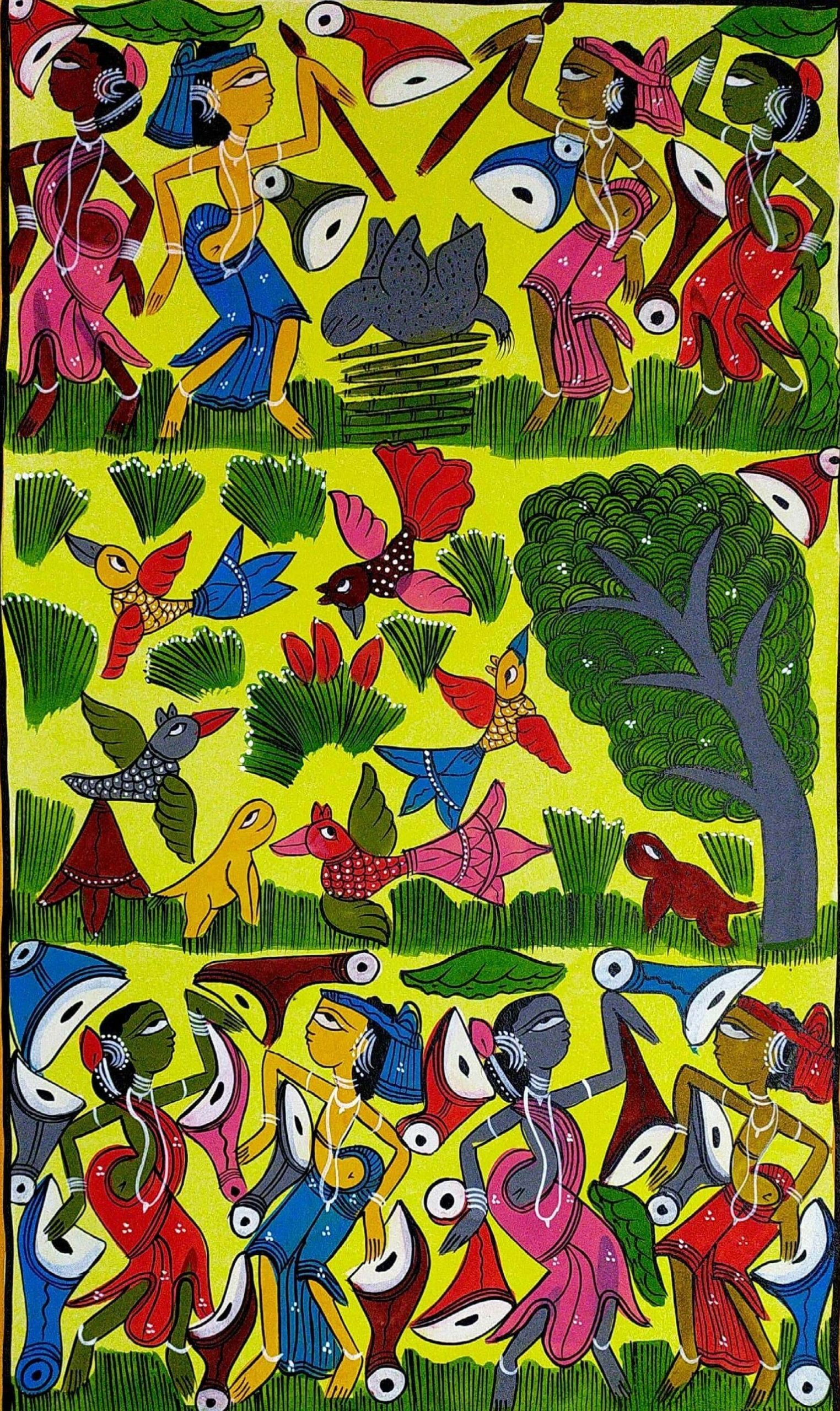
https://www.fizdi.com/festivities-in-santhal-tribe-art 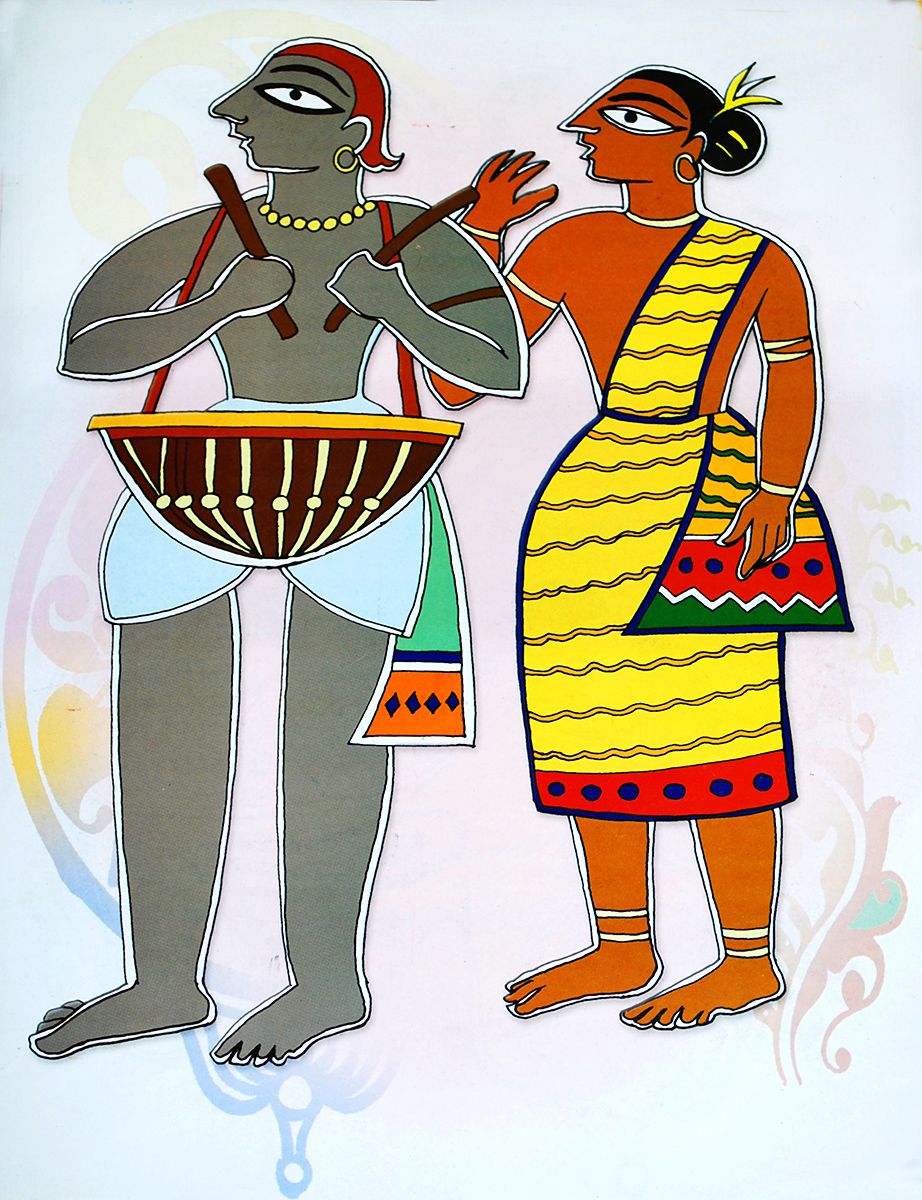
https://www.dollsofindia.com
Also read : Rare Artforms of India & Where Can You Practice Them? to find out about our Santhal painting workshop!
Khovar Art
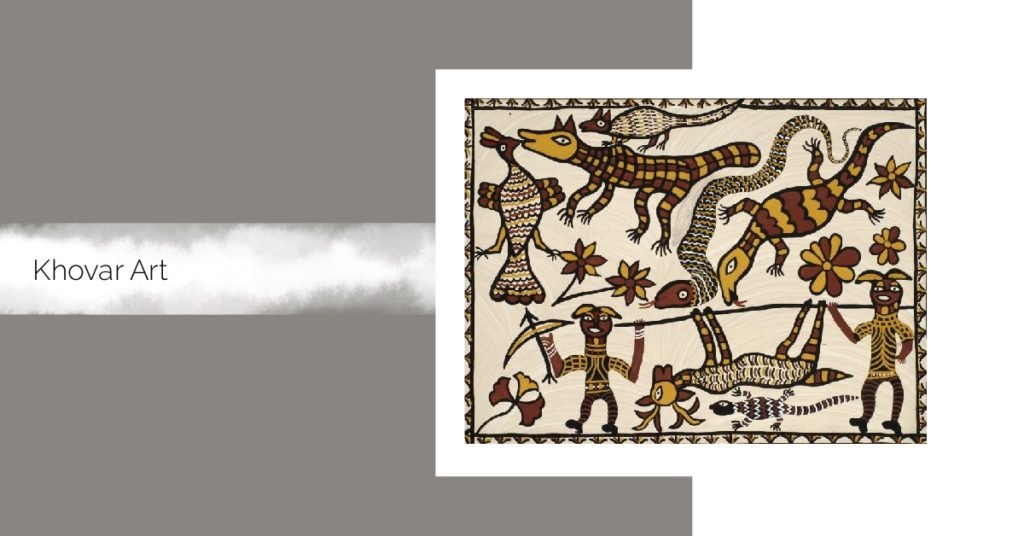
A hidden gem found adorning the hut walls of tribal villages in the Hazaribagh region of Jharkhand. Khovar art is a unique style of tribal paintings, practiced primarily by the women (Mother-in-laws & Daughter-in-laws) of the region. The word ‘Khovar’ stems from two words – ‘Kho’ (cave) ‘Var’ (husband). In effect, Khovar art is a ritual followed by the tribal women during their marriage season. The women paint captivating motifs on their hut walls to create exquisite murals.‘Dhudhi mitti’ (white in colour), ‘lal mitti’ or red oxide, ‘kaali mitti’ or manganese black and ‘peeli mitti’ or yellow ochre mixed with water and gum are used as the paint. Notably, intriguing tools such as broken combs, cloth swabs and twig brushes are used to create Khovar paintings. Wildlife has a strong influence on Khovar art. It is seen as a sign of celebration and good luck with marital and sexual symbolism.
Pithora Tribal Art
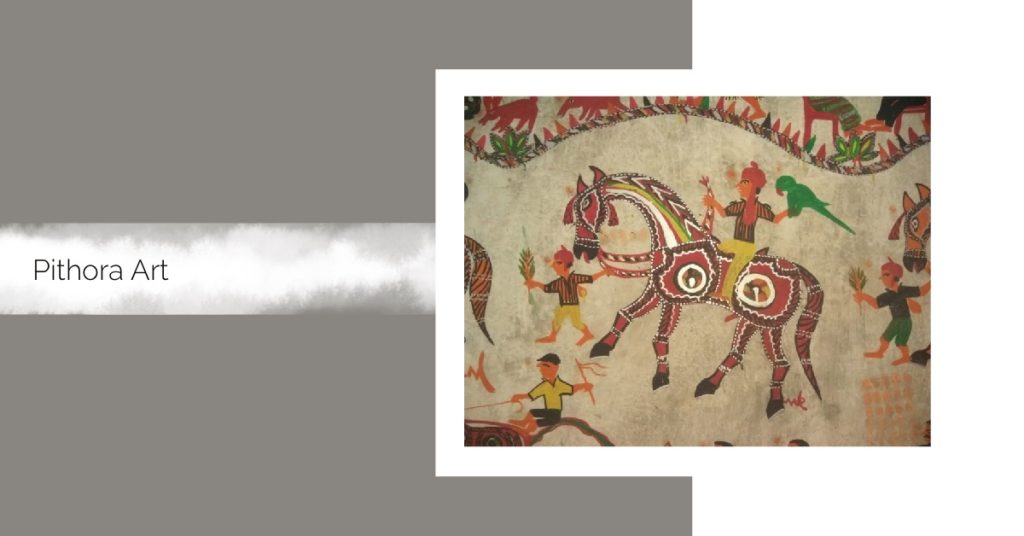
Pithora art is more of a ritual than recreational art. The Rathwa, Bhil, Nayak and Tadi tribes of Gujarat, Rajasthan and Madhya Pradesh practice this tribal art form. The tribes perform this ritual as a way of thanking god or for seeking the fulfillment of a wish. Traditionally, only the men of the tribe create the motifs. They use a mix of sprightly natural and synthetic colours to create the paintings. Moreover, this form of tribal art is characterized by painting the wall at the threshold of the house and its adjacent walls. The walls are first layered with cow dung and chalk powder and then worked upon. The art work illustrates their tribal activities and strong mythological beliefs. Prominent elements in Pithora art are figures of deities, horses, the sun and the moon. In it’s contemporary form, artists now create Pithora on cloth, canvases and cardboard.
Phad Painting
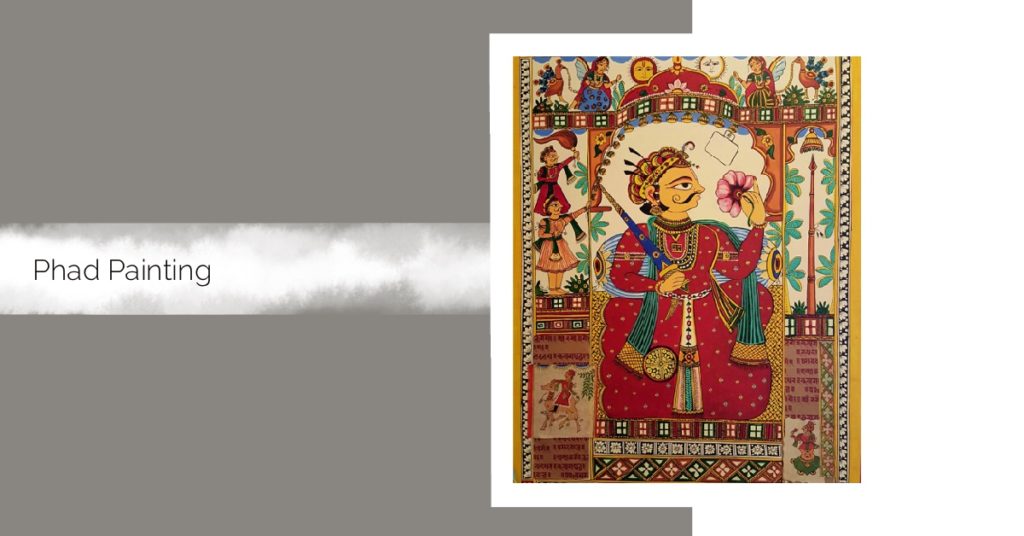
Phad paintings are a 700 year old legacy originating in Shahpura, Rajasthan. It is a style of scroll painting that alludes to the folklore and religious stories of the local deities, especially – ‘Pabuji’ and ‘Devnarayan’. Phad is a form of storytelling for the local priests who unveil the Phads and accompany it with song and dance to narrate the stories of their deities. The paintings entail brilliant attention to detail. Phads are made on hand woven cotton cloths stiffened with starch. Vivid hues derived from flowers, leaves, mud and stones make the paint for the art. Overall, it is the intricate detailing in this tribal art form that makes it stand out.
Gond Art
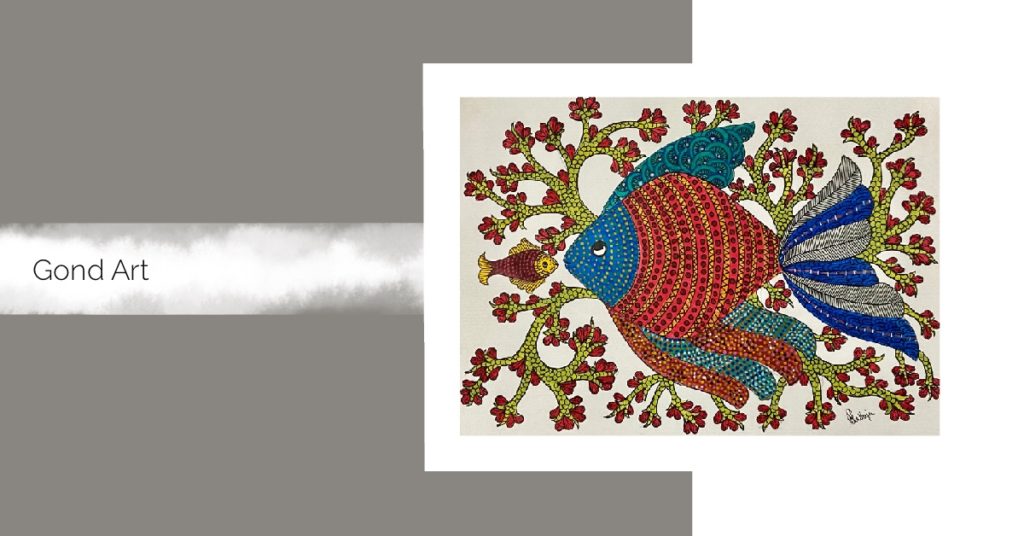
Gond art is native to the Gond tribal community, inhabited in Madhya Pradesh. An age old practice, Gond art is their sacred form of preserving the cultural heritage of their tribe. The paintings unveil stories around the life of the tribal people and the deities they worship. They also recreate scenes from the popular myths and legends of India. A distinguishing factor is the use of geometrical lines, spirals and dotted lines in tune with human figures and elements of nature. Each piece of art has a unique sense of movement. Naturally extracted vivid colours are used as dyes for the paintings. Like most other tribal art forms, in modern times Gond art has shifted from traditional wall paintings to paper and canvas with the use of synthetic paint.
Paitkar Paintings
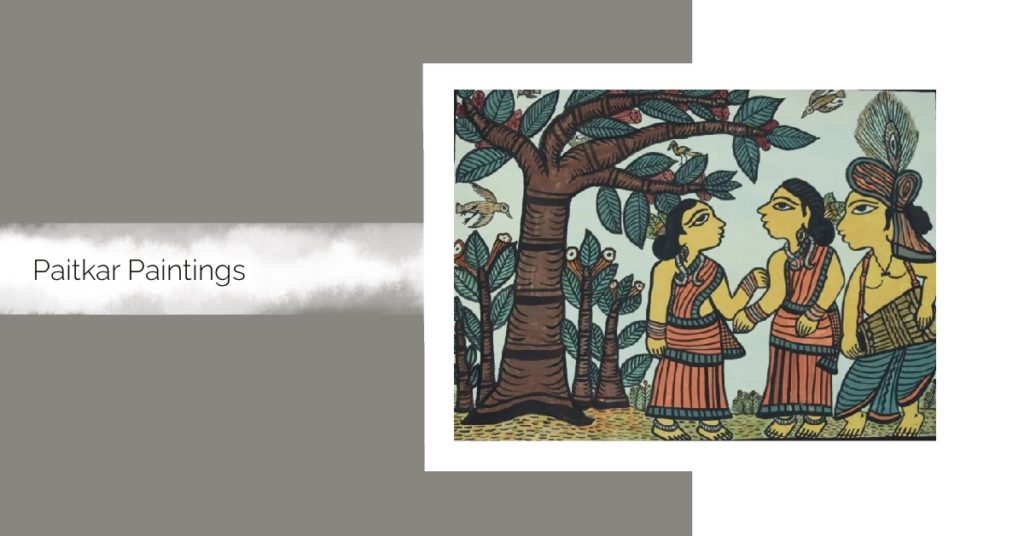
Paitkar paintings are a form of scroll painting hailing from tribal communities in Jharkhand.The culture and ethnicity of their neighbouring state – West Bengal, shape the undertones of the art. These paintings are popular for their representations of the eminent Indian epics like the Ramayan and Mahabharata. Consequently, figures of deities and humans predominate the artwork. These figures are created with elongated eyes for dramatic effect. Paitkar artists only use natural dyes mixed with a special gum derived from the Wood Apple tree. As a result, the paintings are rich in primary colours and neutral muted shades.
Bhil Tribal Art
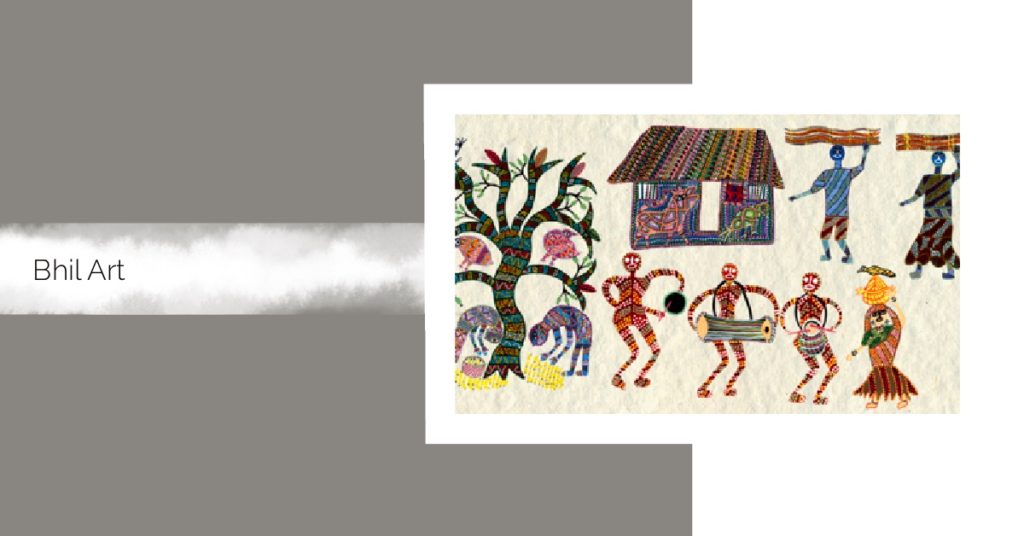
Bhil Art belongs to the second largest tribal community in India – the Bhil tribe. Their primeval art is rather distinct. Bhil paintings use large unlife-like figures and shapes painted in natural and earthy tones. In essence, their art portrays the life of the Bhil tribe and their natural environ. Then the painted figures are overlaid with various dotted patterns. These patterns give the Bhil paintings a uniqueness of their own. Moreover, the dotted patterns symbolise various rituals and beliefs of their tribe and have an individuality owing to their artists.
Saura Painting
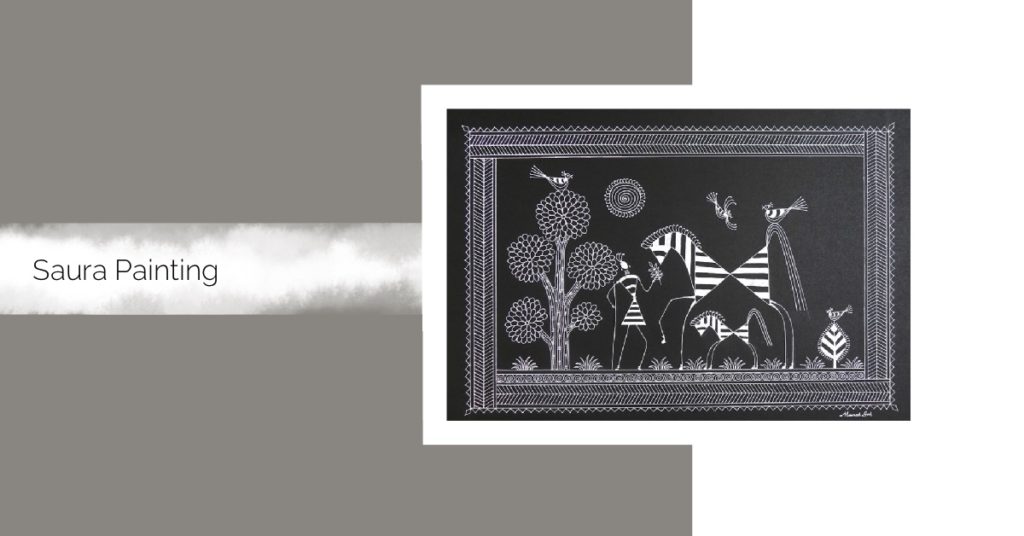
Saura painting finds its roots in Odisha’s Saura tribe. These paintings hold close visual resemblance to Warli art. Yet, they have stark differences in terms of the style and treatment of the art work. Saura paintings, also known as ‘Ikons’ draw immense inspiration from Indian mythology. The tribe dedicates the art to their deity ‘Idital’. Dyes extracted from ground white stone, tamarind seeds, vermillion, flowers and leaves are used to create the wall murals. The artists use frayed bamboo brushes to paint concentric geometric patterns and stick figures. In contrast to Warli art, Saura paintings don’t follow physical differences in denoting male and female figures.
Kalamezuthu
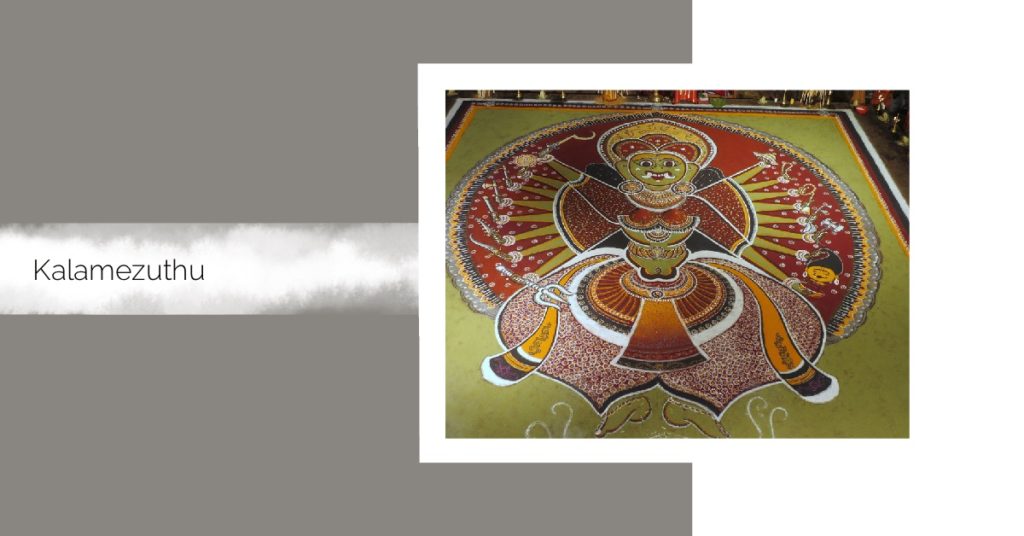
A popular form of tribal temple art in Kerala, Kalamezuthu is a fascinating style of art expression. The artwork of this school adorns temple floors as a ritual and means of pleasing the presiding deity. The art follows a focused linear pattern – from top to bottom. Kalamezuthu artists use white rice powder to outline the design and fill in the colours with turmeric, charcoal powder and red manjadi powder. Significantly, the artwork consists of figures of various Hindu Gods and Goddesses.
Art in every form undergoes constant evolution. However, certain art forms like the varied tribal art found in India, have stood the test of time. These forms of tribal art continue to maintain their hold in the contemporary world. Remarkably, each of these art forms have their own individuality. Yet, they come together in solidarity. In conclusion, we recommend, art lovers on the lookout to try something different, must indulge in Indian tribal art.


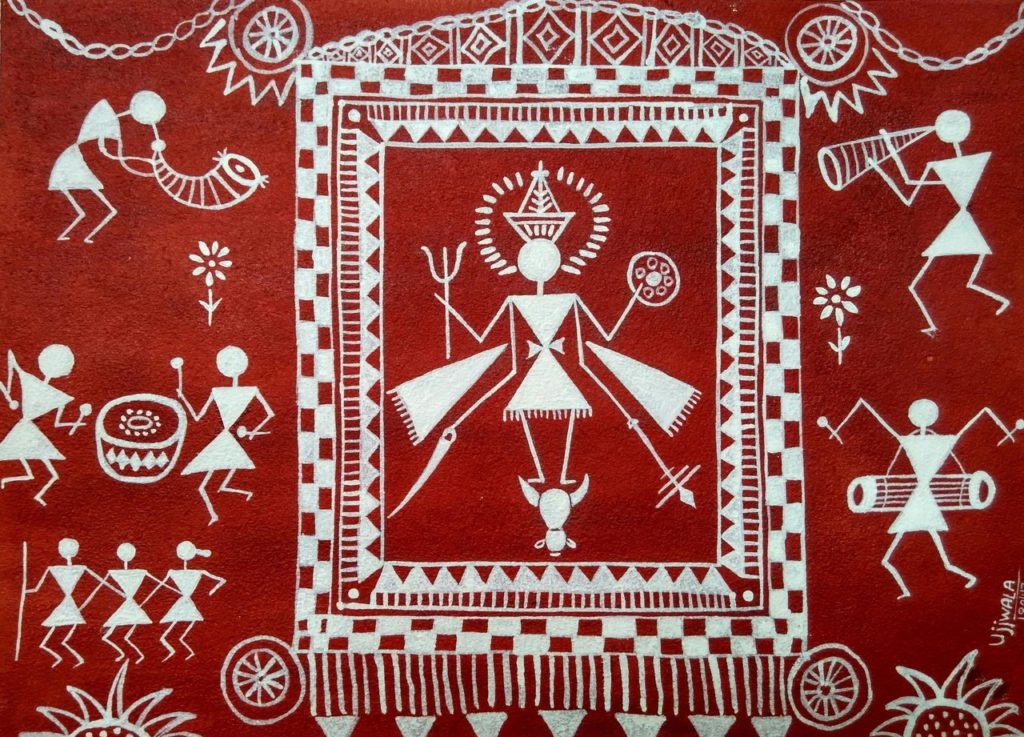

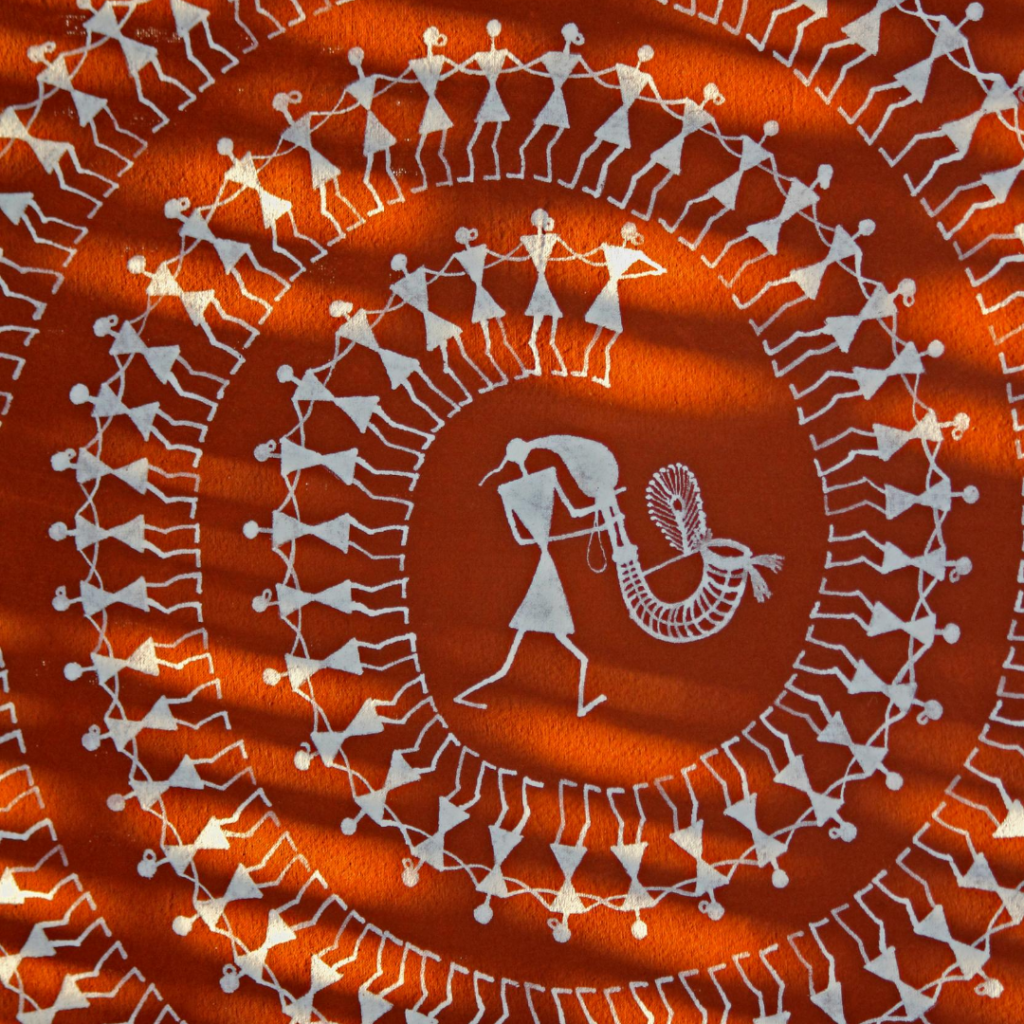
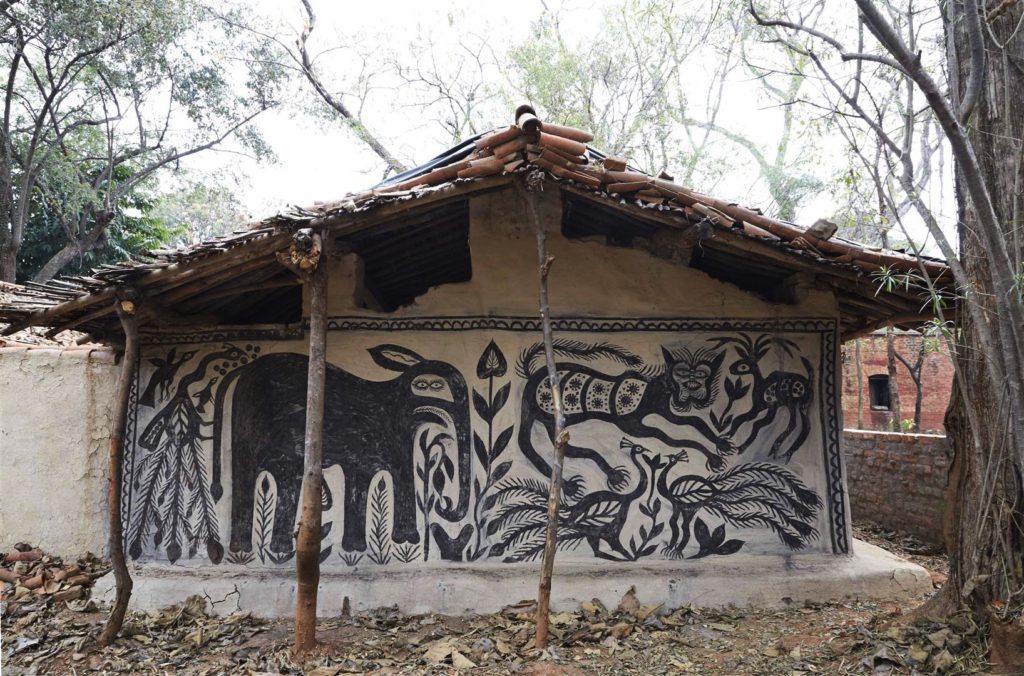
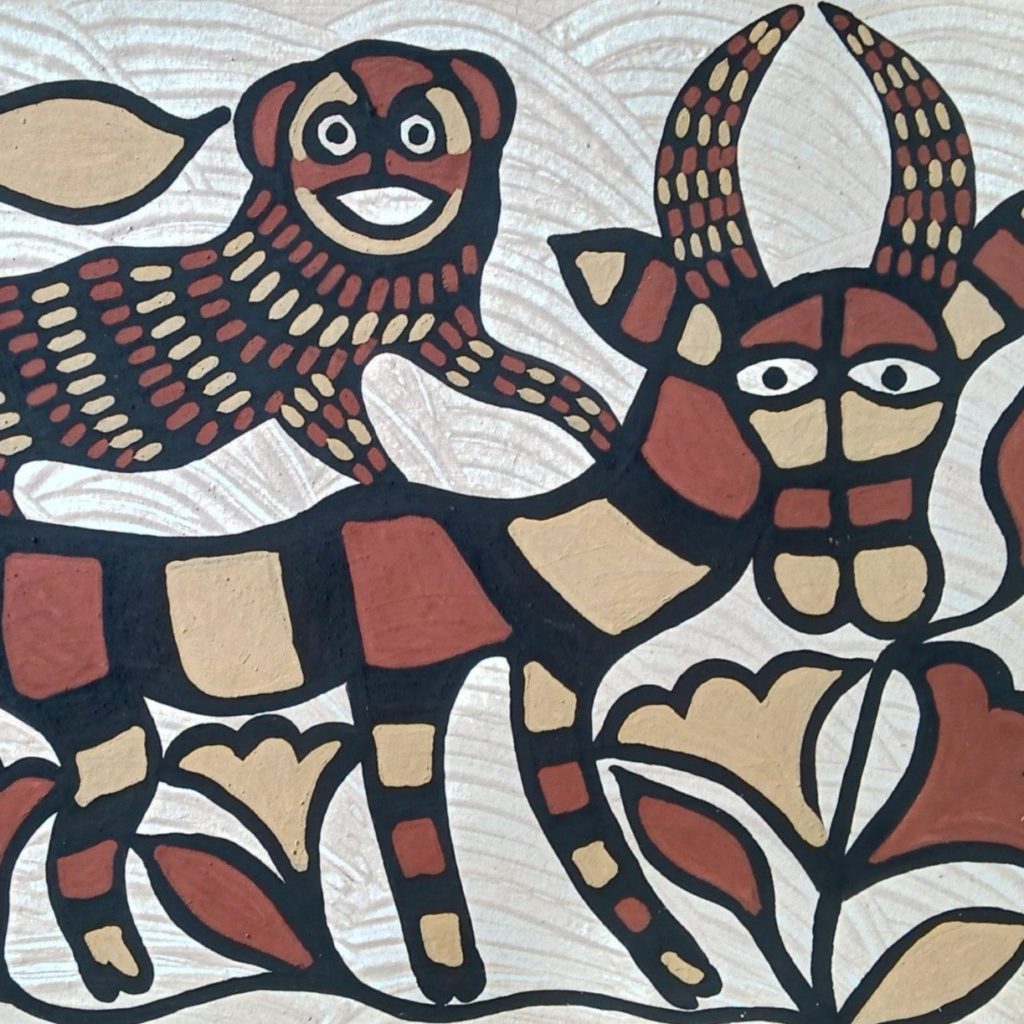
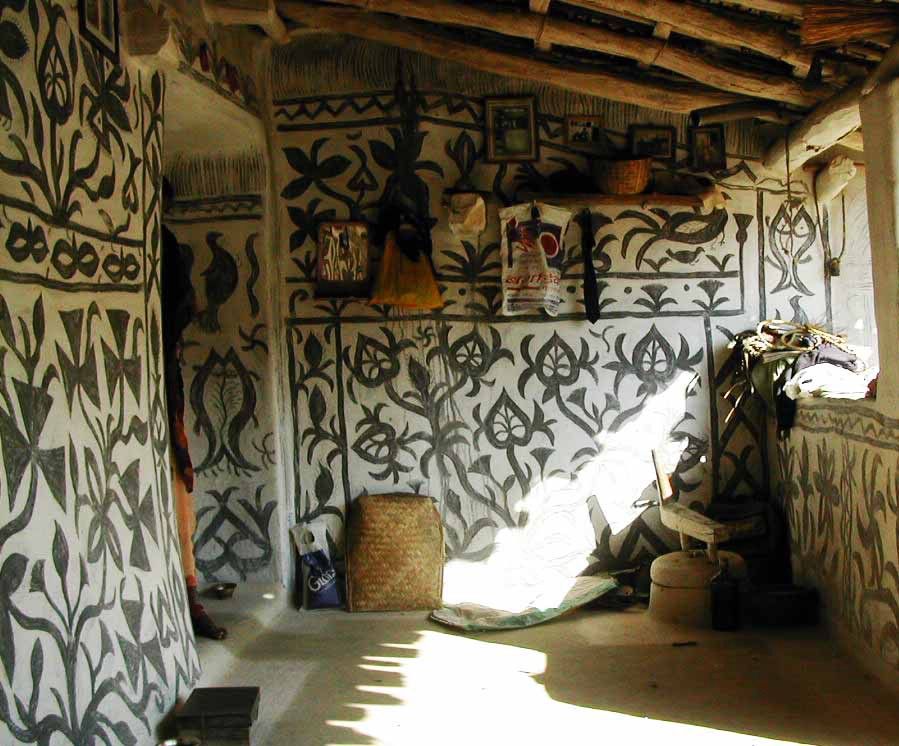
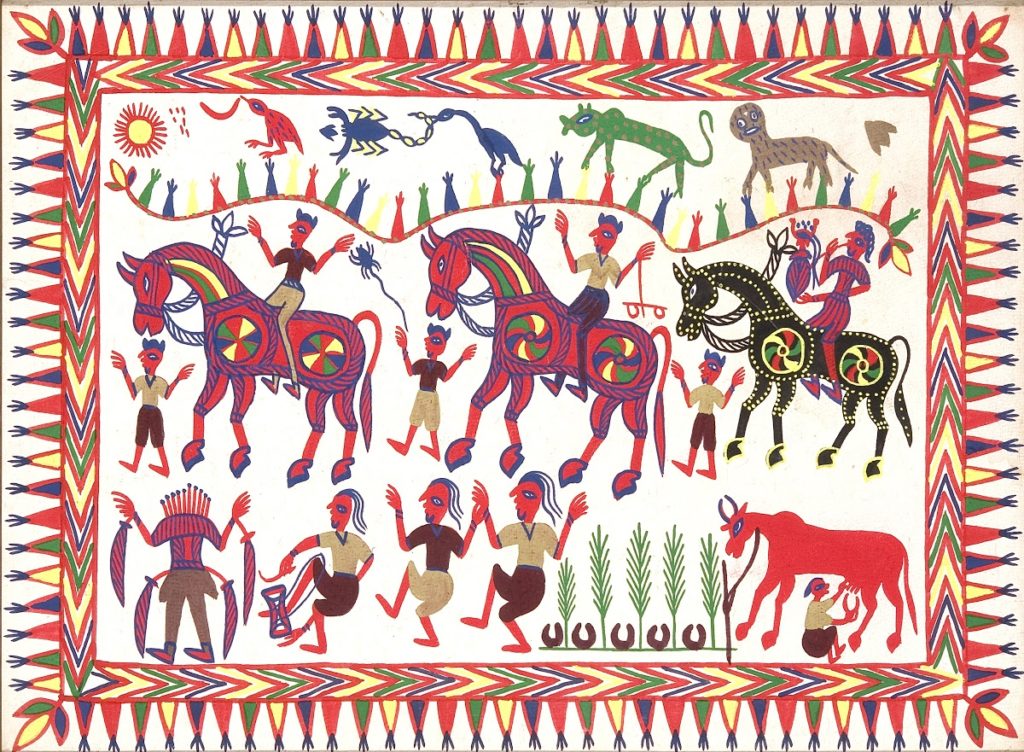
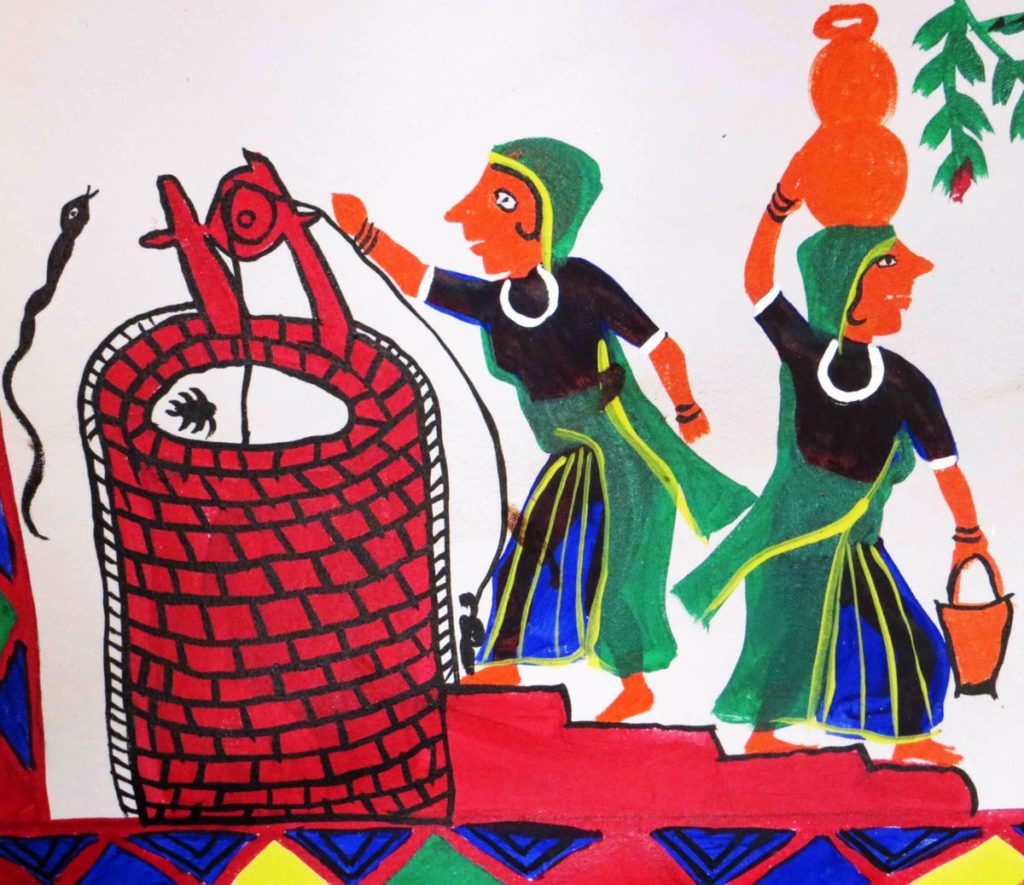

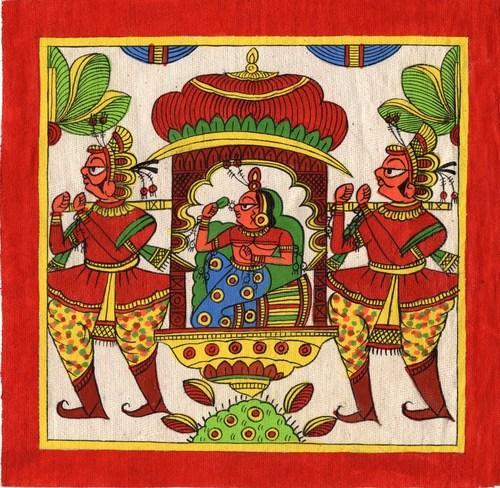
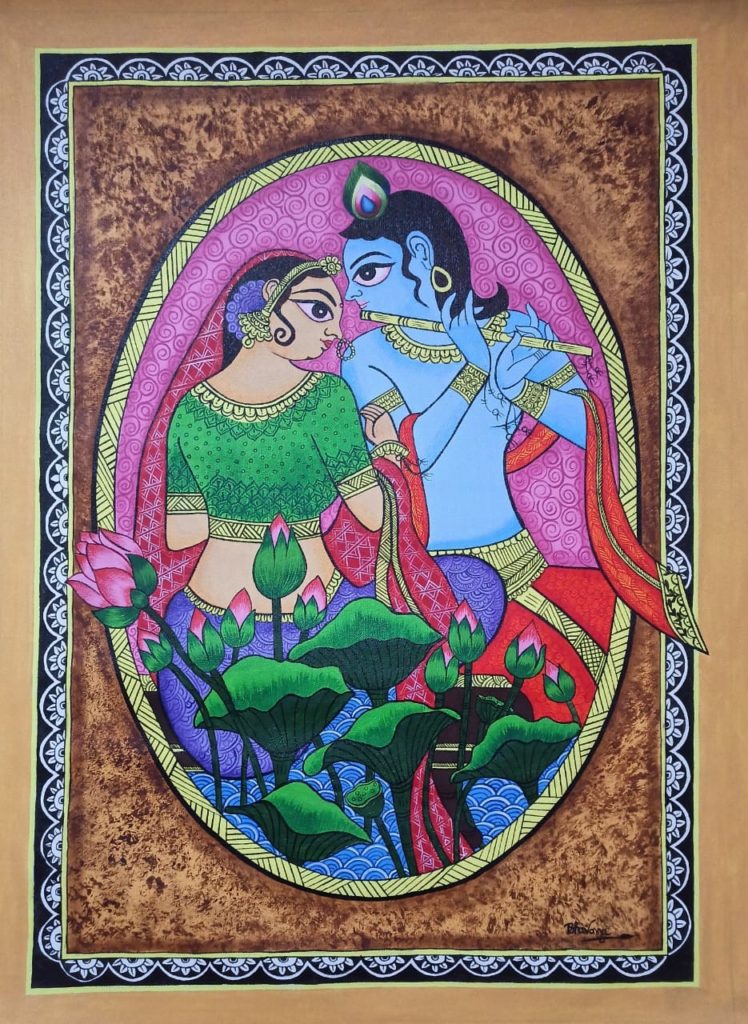
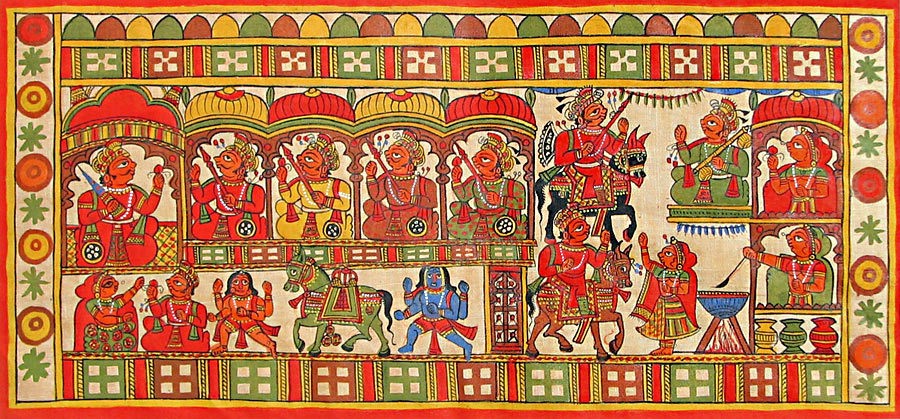
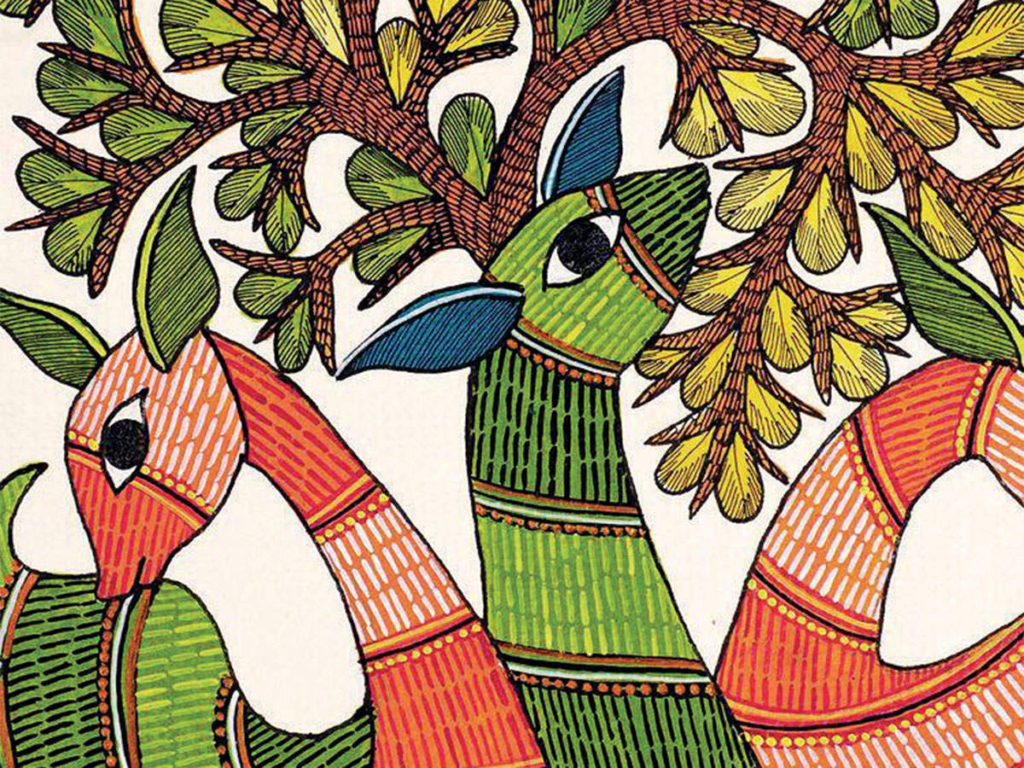
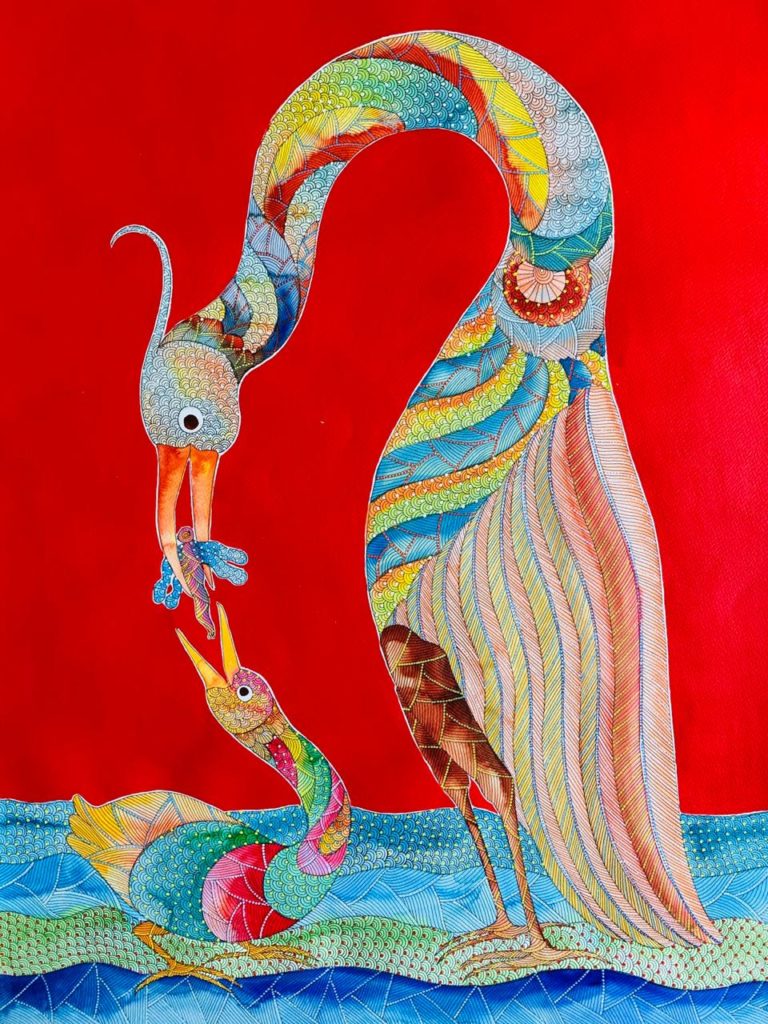
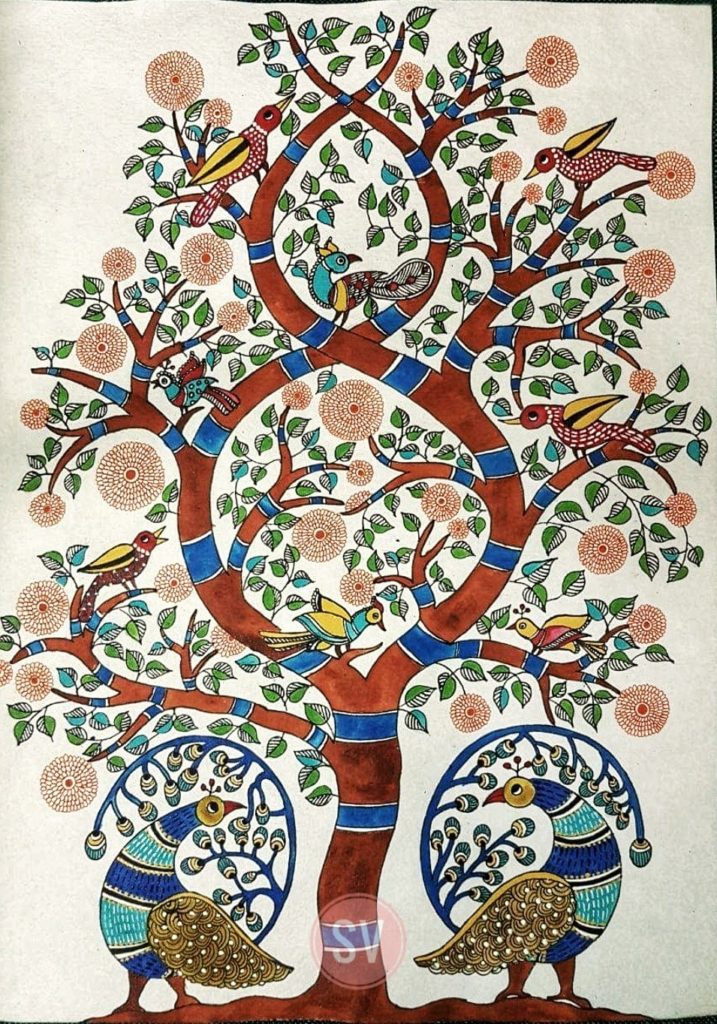
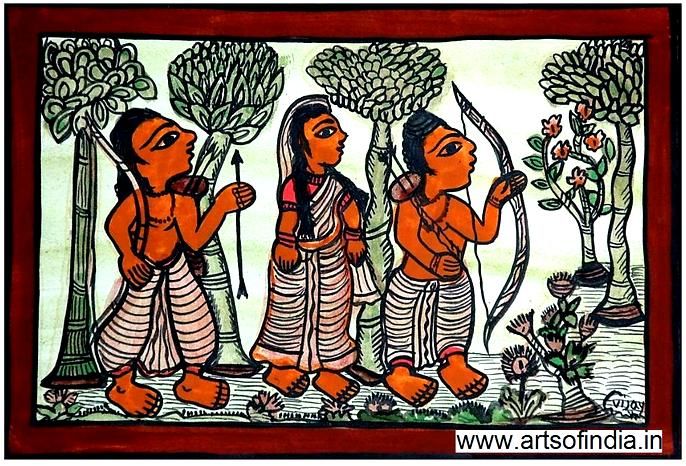
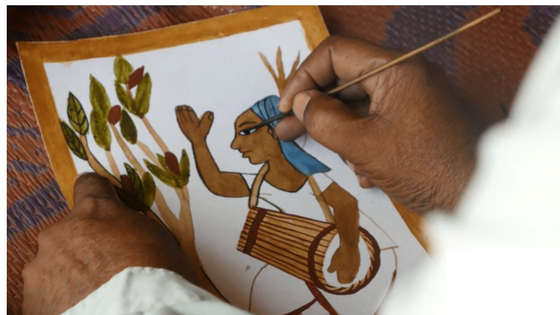
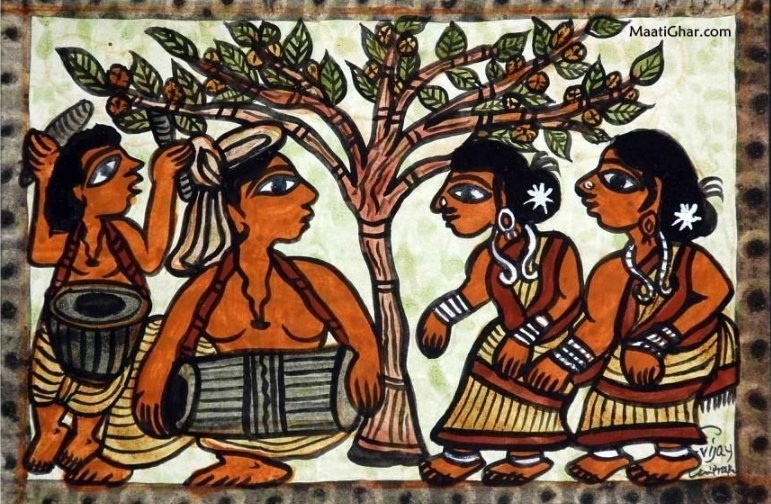
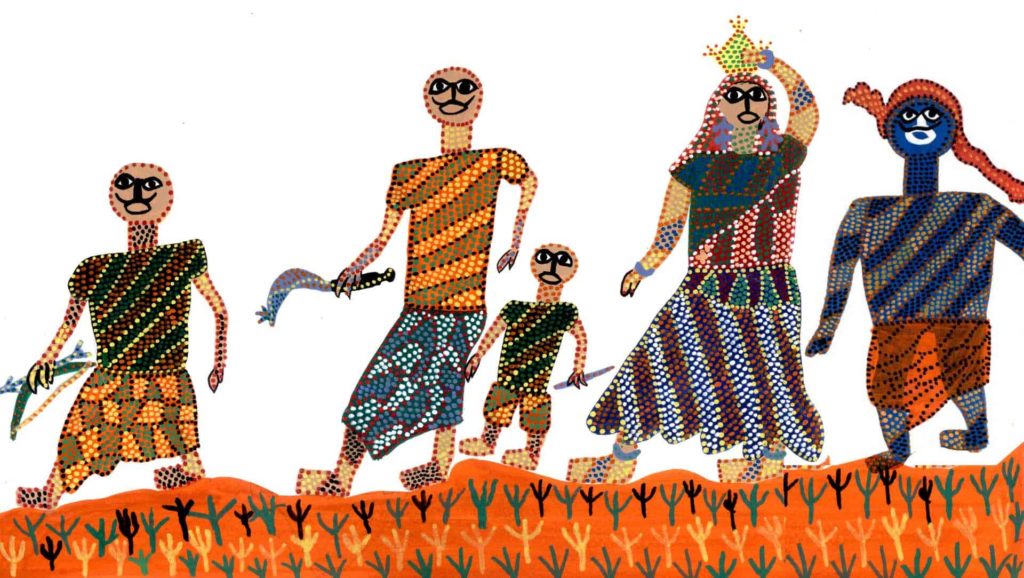
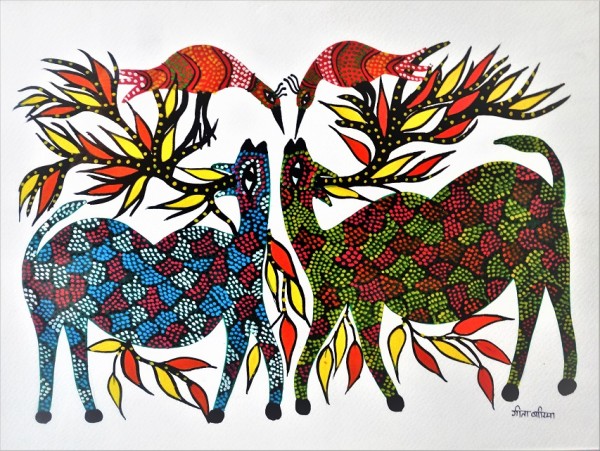
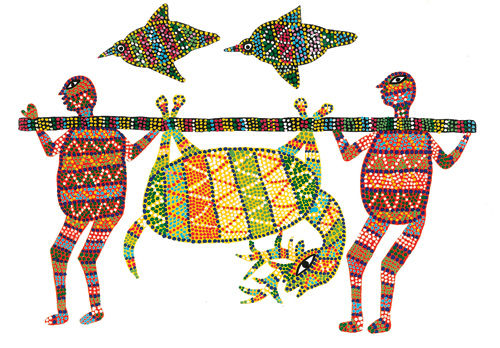
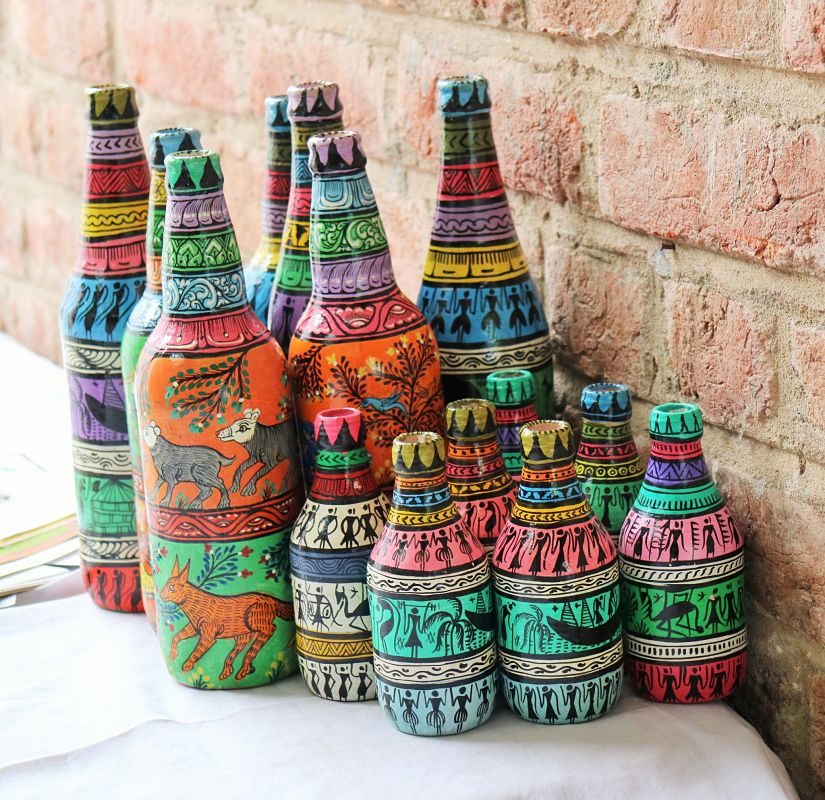
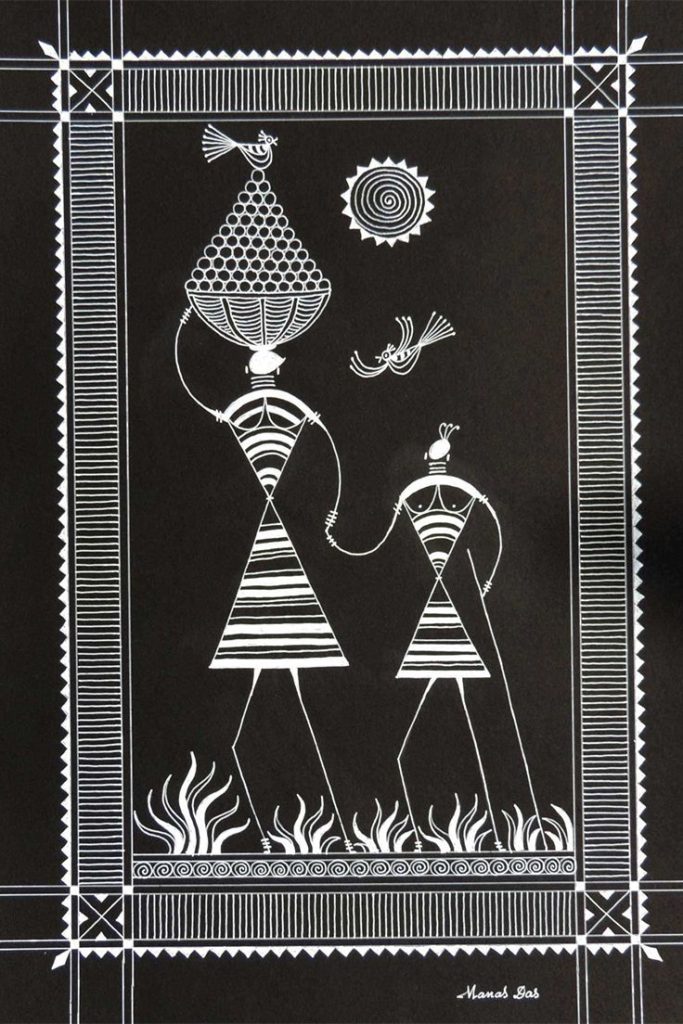
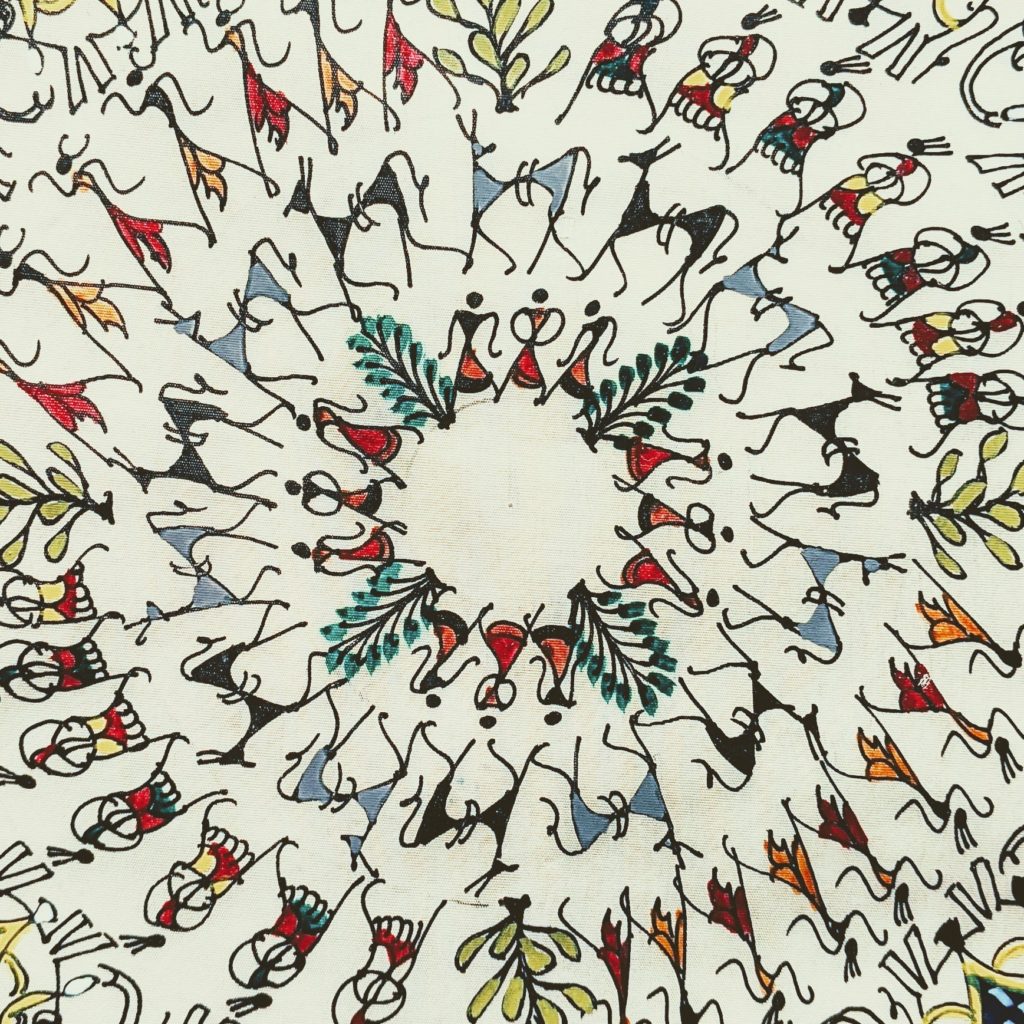
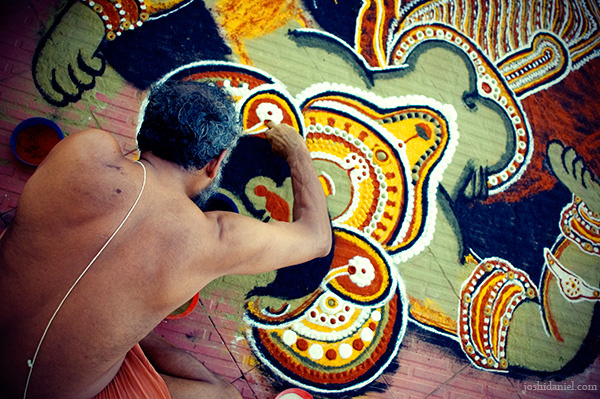
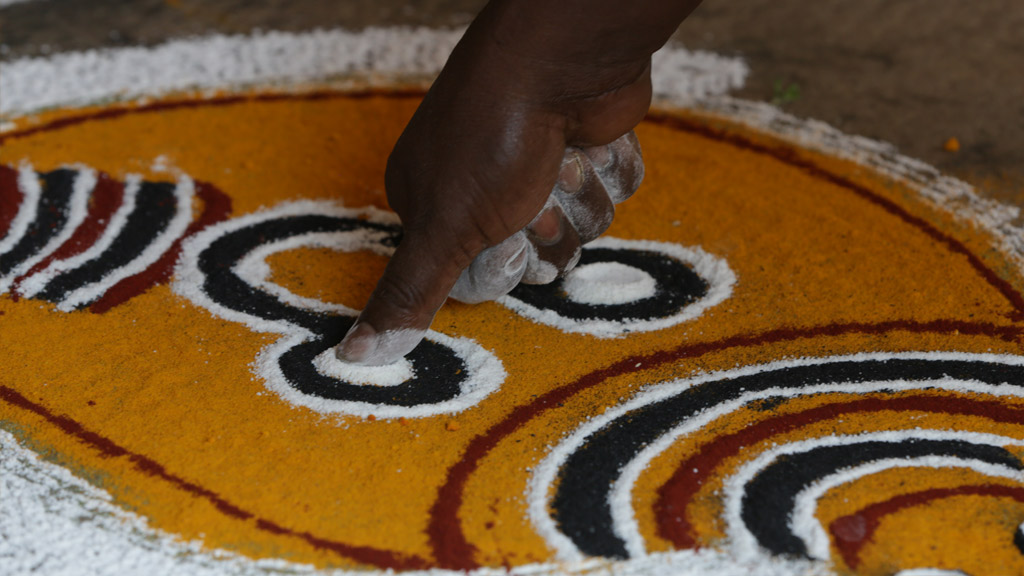
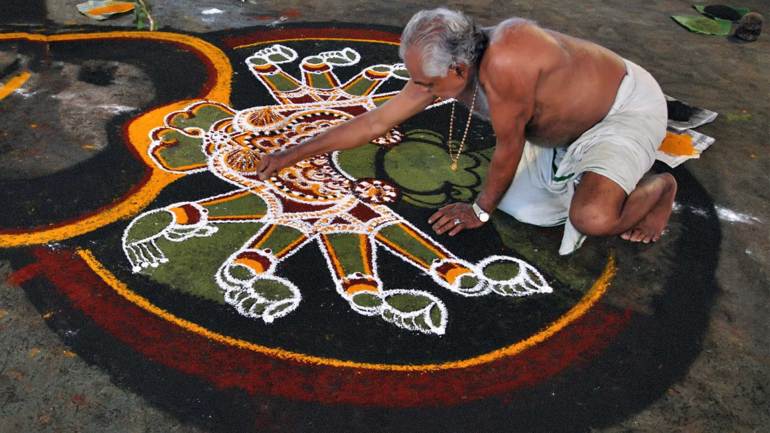

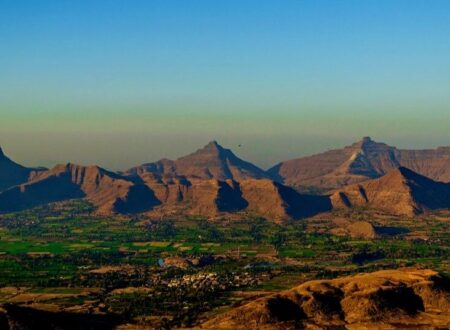
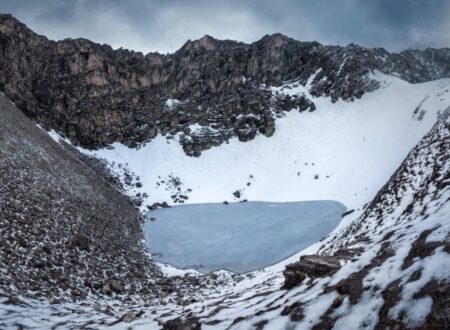

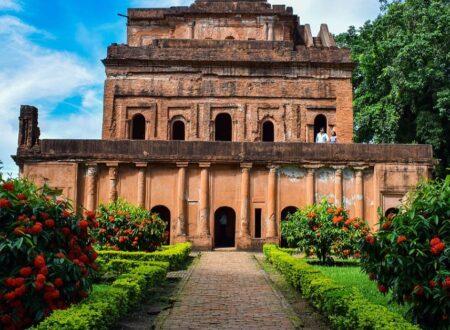
12 Comments